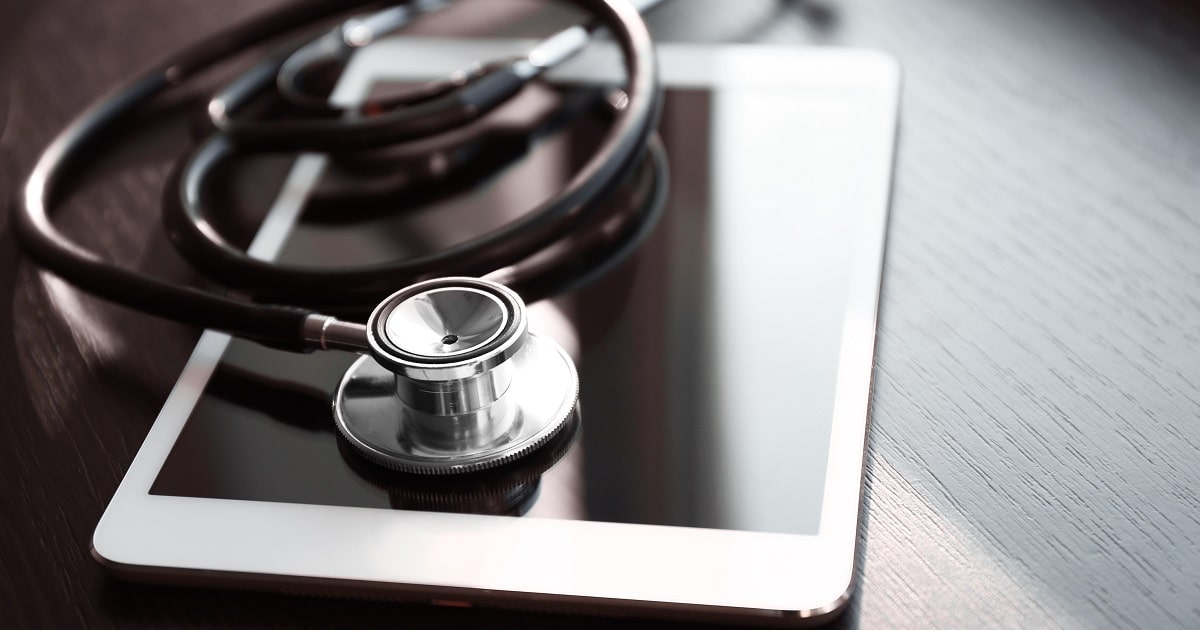
Health Technology, Digital Healthcare
Article | August 16, 2023
Affordable healthcare is the need of the hour and interoperability is the means to that end. The healthcare ecosystem is looking into ways they can enable this affordability as soon as possible, and that is where FHIR comes in. FHR promises an on-demand exchange of secure healthcare information. It has become an increasingly popular protocol, thanks to its commitment to ensuring interoperability in the app economy, via apps.
The privilege enjoyed by consumers and participants in most industries is the ease of accessibility of information. With most of it being on the cloud, a URL ensures access to the same information regardless of where it is being accessed from or which internet enable device. This is the privilege FHIR aims to introduce in healthcare, over the current document-based approach where forms are either faxed, emailed, or electronically exchanged.
FHIR is for
Building new healthcare apps
Develop cloud-based health apps that integrate with social networks
Providing a simple to use standards-based API for cloud-based health integration services
The government looking to implement a national EHR
FHIR Aims to Reduce Cost
The medical expenses of an average American in a year are north of $12k and rising. The reasons are the unnecessary complications in the healthcare IT infrastructure. With FHIR, HL7 aims to reduce the burden on providers in sharing and accessing healthcare data at the point of care, thereby reducing the administrative expenses spent on moving data back and forth. It also promises to grant on-demand access to patients – enabling them to make better-informed healthcare decisions.
What is part of FHIR?
Pre-defined Resources and API
A common way to represent data as building blocks and rules for connecting them
Target support for common scenarios
Implementer Friendly
Familiar tooling and technologies using web standards
Multiple Libraries available for faster implementations
Mobile Friendly
Concise and easily understood specifications, RESTful API and JSON
Leverages cross-industry web technologies
Multi-paradigm
Thick client, browser, or mobile devices
Supports human readability as the base level of interoperability
Large Community for Support
Heaps of open-source software and training events, webinars, and connectathons
Specification feedback welcomed, including update requests-tracker
Out-of-the-box Interoperability
Base resources can be used as it is, can also be adapted for local requirements
Seamless exchange of information using messages or document
Start The FHIR
Health plans are jumping on the FHIR bandwagon faster than ever thanks to the Interoperability and Patient Access rule as well as the latest proposals. Do not get left behind or sustain the ramifications of non-compliance with CMS regulations.
Read More

Healthtech Security
Article | November 29, 2023
Technology in the 21st century is the fuel that drives innovation and ease in almost every industry today. The healthcare sector isn’t far behind. In fact, the medical industry has taken the concept of the Internet of Things and took it to a new level altogether to reimagine the use of medical technology.
Imagine multiple devices like phones, cameras, GPS sensors, and computers interacting with each other through a seamless transfer of data. Now consider wearable medical devices. The exchange of critical medical information through a web of real-time data networks activates near instantaneous responses from doctors, nurses, and medical services. The aim is to anticipate the need for medical attention long before it is needed and remedy the concerns before they reach a critical stage.
That is exactly how the future of the Internet of Medical Things (IoMT) is shaping out to be.
How IoMT is Redefining Everyday Health?
IoMT is a next-generation solution that embeds cutting-edge monitoring and analysis of individual healthcare journeys through medical devices. The smart watch is the most recognizable wearable medical device that is used by millions of people daily to keep tabs on their vitals.
For instance, the Apple Watch series 6 maps blood oxygen levels, sleep patterns, ECG levels, and also reminds the user to wash their hands after returning home.
The market for healthcare IoT products is vast and is constantly expanding. The Tango Belt is a leading example of smart wearable technology that is revolutionizing elderly and disability care. The belt is designed to sense falls and deploy airbags to soften the impact. In addition, it alerts caregivers in the event of a fall. The belt also uses data analytics by collecting mobility data that is then synced to a smartphone app for displaying metrics.
Technologies that Empower IoMT
With the diverse tasks that medical devices must perform, applications exist across a wide spectrum, from artificial intelligence to 5G networks to the cloud.
Consider a pacemaker, for instance. Modern pacemakers are embedded with a multitude of technologies that communicate with each other to send critical patient data to physicians. A pacemaker is a bioelectronic implant that is placed in the chest to control the heartbeat. But a smart pacemaker goes a step further. It is equipped with wireless bluetooth technology that communicates with the patient’s wearable medical device. The smart device or phone will then transfer this data to physicians for check-ups and even alert doctors in the case of anomalies.
To Round It Off
IoMT will subsequently power all medical devices and usher in a future where technology forms the backbone of healthcare service delivery. Although wearable medical technology has been around for decades, the development of a streamlined communication channel between them has redefined their use. Smart medical devices are no longer just an aid but a source of vital individual medical data as well as a way to anticipate care and medical attention.
Read More

Health Technology, Digital Healthcare
Article | July 14, 2023
Explore a curated collection of EHR books while discovering the potential of exploring electronic health records books, empowering individuals to navigate complexities and make informed decisions.
Electronic health records (EHRs) have revolutionized the healthcare industry, streamlining patient data management and transforming how medical information is accessed, stored, and shared. A carefully curated list of essential EHR books can be an invaluable resource for healthcare professionals looking to expand their knowledge and expertise in this rapidly-evolving field.
Explore these electronic health records books that deepen insights and help navigate the intricate world of healthcare:
1. Connected for Health
Editor: Louise L. Liang
‘Connected for Health: Using Electronic Health Records to Transform Care Delivery’ explores the implementation of the world's most extensive non-governmental electronic health record system. The book delves into the far-reaching impact of this system on patient care outcomes, operational efficiency, safety, and patient engagement. Louise L. Liang draws upon valuable insights and lessons learned from the successful deployment strategy, showcasing how these technological tools are revolutionizing healthcare delivery and reshaping the organizational culture within the industry. This comprehensive resource sheds light on the transformative potential of electronic health records, offering a glimpse into the future of connected healthcare and its potential to improve patient experiences and drive positive change within healthcare organizations globally.
2. Hacking Healthcare
Authors: Fred Trotter and David Uhlman
‘Hacking Healthcare: A Guide to Standards, Workflows, and Meaningful Use’ is a concise and insightful book that critically evaluates the US healthcare system's adoption of electronic health records (EHRs) and other IT solutions to meet the government's meaningful use requirements. While acknowledging the tremendous opportunities for IT professionals, it also highlights the significant challenges of overhauling outdated record systems, workflows, and practices. EHR books, such as this one, provide a comprehensive overview by examining the unique characteristics of healthcare settings, exploring the complexities of transitioning from paper to digital records, analyzing billing and payment systems, emphasizing patient engagement through EHRs, and addressing the critical issue of avoidable errors.
3. The Innovator's Prescription
Authors: Clayton M. Christensen, Jerome H. Grossman, and Jason Hwang
‘Innovator's Prescription: A Disruptive Solution for Health Care’ presents a visionary prescription for reforming the ailing healthcare system. The book applies the principles of disruptive innovation to revolutionize the broken healthcare system. It identifies and addresses various symptoms, offering proven solutions that will improve the affordability and quality of healthcare. The book explores how precision medicine can reduce costs and deliver personalized care, how disruptive business models can enhance accessibility, affordability as well as quality, and how patient networks can improve the treatment of chronic diseases. Additionally, it highlights the need for employers to adapt their roles in EHRs to compete effectively in a globalized era.
4. The Guide to the Future of Medicine
Author: Bertalan Meskó
‘The Guide to the Future of Medicine (2022 Edition): Technology and The Human Touch’ is an insightful and authoritative book that examines the transformative power of electronic health records (EHRs) and other technological advancements in medicine and healthcare. The author comprehensively assesses how EHRs have revolutionized healthcare delivery, offering a roadmap to tomorrow's potential. By exploring the integration of EHRs with emerging technologies and trends, such as exoskeletons, social media for medical information, and supercomputers in medical decision-making, EHR books like this one offer patients, medical professionals, and healthcare stakeholders an enlightening and fact-based perspective on how technology can shape and enhance their well-being while preserving the essential human touch.
5. The Digital Doctor
Author: Robert Wachter
‘The Digital Doctor: Hope, Hype, and Harm at the Dawn of Medicine’s Computer Age’ explore integrating electronic health records (EHRs) into healthcare. Driven by compelling stories and astute analysis, the book addresses the challenges and opportunities presented by technology in medicine. It raises pertinent questions about the impact of digital systems on patient care, highlighting concerns such as the loss of human connection and the occurrence of medical errors despite computerization. With clarity and compassion, the author emphasizes the need to understand the transformative nature of technology in healthcare and advocates for its proper implementation to ensure a harmonious relationship between humans and machines.
6. The Internet of Healthy Things
Authors: Joseph C. Kvedar, Carol Colman, and Gina Cella
‘The Internet of Healthy Things’ explores the profound impact of IoT on healthcare, with a particular emphasis on electronic health records (EHRs). This integrated electronic health records book delves into the transformative potential of real-time biometric data in understanding the relationship between lifestyle and chronic diseases. The authors describe the driving forces behind this trend and unveil the business opportunities it presents for various sectors, including payers, providers, pharmaceutical and biotech companies, technology vendors, and innovative newcomers. The book provides insights into consumer behavior, strategies for designing compelling health devices and platforms, exploration of novel form factors for health information delivery, strategic guidance for startups and entrepreneurs entering the connected health market, and interviews with industry leaders and innovators.
7. Electronic Health Records
Author: Jerome H. Carter
The second edition of ‘Electronic Health Records: A Guide for Clinicians and Administrators’ offers medical professionals and administrators a comprehensive grasp of the functionality and significance of electronic health records (EHRs). The book addresses the numerous inquiries when assessing, procuring, and utilizing an EHR system. It is a valuable resource for individuals who remain undecided about investing in an EHR system or seek a comprehensive and up-to-date understanding of the growth potential and associated challenges of EHRs. The book offers insightful guidance and effectively combines written explanations with visual aids such as figures and tables. It is an exceptional resource for introductory courses on healthcare systems.
8. Ensuring the Integrity of Electronic Health Records: The Best Practices for E-records Compliance
Author: Orlando López
‘Ensuring the Integrity of Electronic Health Records: The Best Practices for E-records Compliance’ is a comprehensive guide that emphasizes the crucial role of data integrity in the design, implementation, and utilization of systems handling electronic health records (EHRs). The book highlights the importance of recording data accurately and ensuring its consistency throughout its lifecycle. Providing practical insights and up-to-date information enables a better understanding of the controls necessary for maintaining compliance with EHR regulations. With a specific focus on production and quality control systems in the pharmaceutical and medical device industries, the book addresses the suitability of EHR implementation, risk-assessed controls, and proper handling of EHRs, ultimately emphasizing the criticality of data integrity in ensuring patient safety and regulatory compliance.
9. Electronic Health Records
Author: Richard W. Gartee
‘Electronic Health Records: Understanding and Using Computerized Medical Records’ is an instructional resource for Health Information Management and Health Information Technology programs. Written by Gartee, this electronic health records educational book effectively utilizes EHR in medical practice through practical exercises and activities. Suitable for various educational institutions, the book includes a Student CD with networking capabilities. The ‘Medcin Software’, integrated into the instructors' manual, enhances learning with its multi-user functionality and widespread use in EHR systems. This comprehensive resource prepares students to apply their skills in real-world EHR applications.
10. Electronic Health Records and Medical Big Data
Author: Sharona Hoffman
‘Electronic Health Records and Medical Big Data: Law and Policy’ is a comprehensive book that offers a profound understanding of electronic health record (EHR) systems, medical big data, and the regulatory landscape governing them. It is a valuable resource for students and professionals alike, providing interdisciplinary analysis and insights. The book explores the impact of EHR systems on clinical care and the generation of medical big data, examining their benefits, drawbacks, and the legal framework surrounding their use. It addresses various challenges, including privacy, security, data quality, and analysis. With detailed recommendations for regulatory, policy, and technological improvements, the book emphasizes the vital role of the law in safeguarding and enhancing EHR systems and the medical big data derived from them. Its structure comprises two main parts, focusing on EHR systems in clinical settings and the utilization of medical big data for research and non-clinical purposes.
Final Chapter
This curated list of engaging electronic health records books serves as an essential read for patients, providers, and C-suite executives alike. These EHR books not only unravel the intricacies of the digital age but also provide valuable insights into the evolving healthcare industry. For healthcare professionals, these resources offer a deeper understanding of EHR implementation, usability, and the legal considerations surrounding them. Additionally, professionals can leverage the knowledge gained from these electronic health records educational books to navigate the complexities of integrating EHR systems within their organizations, driving strategic decision-making, and ensuring the delivery of effective and compassionate healthcare services. By embracing the transformative potential of these EHR books, informed by the wisdom shared within them, healthcare leaders can forge a path toward a more efficient, patient-centered, and technologically-advanced healthcare system.
Read More

Article | September 9, 2020
© 2019 American Cranes & Transport Magazine.
Night moves
Moving over-sized, over-dimensional loads during the day is no easy task. Adding darkness and poor visibility to your trip adds numerous hazards that must be thoroughly identified and mitigated.
When planning a specialized transportation project, there are three primary objectives:
Ensure the safety of the transport crew and the general public.
Protect the integrity of the cargo and transport equipment.
Protection of Infrastructure – roads, bridges, traffic control devices, utilities and the like.
For the most part, specialized carriers perform night transports to reduce the impact on day-time commuter traffic. Route challenges – construction, road closures, lane crossovers, bridges and other obstacles – are often better solved at night. Police and utility support are often more readily available at night.
Night transport hazards include employee fatigue, slowed reaction time and poor visibility for both the transport crew and motorists. Decreased visibility increases potential for trips, falls, runovers, back overs and equipment strikes.
It can’t be emphasized enough how critically important it is to ensure that all transport crew members have had adequate rest for these projects. Workers need complete rest before the transport takes place. A fatigued worker is a danger to himself as well as his fellow crew members. And while impaired drivers can be out on the streets during the day, there is often an increased number of these drivers on roadways at night.
Limited visibility is a given when it comes to night-time transports. Limited visibility increases the chance of going off route and striking objects, and the transport driver’s maneuverability and reaction time maybe be reduced. Road conditions can abruptly change during a night-time transport. Therefore, it is critically important to know the route and to have drivers run it in advance. Statistically speaking, accident frequency increases when the transporter goes off route and attempts to correct itself. While providing the necessary lighting to make night transport is important, artificial lighting can pose visibility hazards, especially to the drivers. Other hazards may include bright work lighting that produces glare.
OSHA has identified the “Focus Four” accident events that make up the most serious injuries and fatalities in the construction business. They are also known as the “Fatal Four.” Many carriers have had employees injured in the past as a result of one of these four incidents.
Caught-in-between hazards are injuries resulting from a person being squeezed, caught, crushed, pinched or compressed between two or more objects or between parts of an object. This is also referred to as “pinch points or entrapment.” As the transporter navigates its designated route the landscape is continuously changing. It is imperative that all ground crew members maintain situational awareness and not place themselves between the moving transporter and fixed objects such as guardrails, parked vehicles, buildings, etc.
Struck-by hazards are injuries produced by forcible contact or impact between the injured person and an object or piece of equipment. There are many potential struck-by hazards. Guide wires that must be raised can snap and strike workers on the ground. Tag lines should be used to control loads. The primary purpose of using tag lines is to control the load but more importantly give the worker a safe buffer distance away from suspended and the uncontrolled movement of these loads.
Fall hazards are anything that could cause an unintended loss of balance or bodily support and result in a fall. To prevent fall hazards all workers should have either fall prevention or a means of fall protection in place. As a rule, 100 percent tie off is required when using a fall arrest system (FAS). FAS’s should be thoroughly inspected before each use.
Electrocution hazards result when a person is exposed to a lethal amount of electrical energy. Maintaining minimum approach distances (MAD) is a critical safety practice. As everyone knows, equipment does not have to physically make contact with energized equipment or lines to cause serious injuries and even death. Electrical energy can “jump” from lines into equipment that has encroached the Minimum Approach Distance based on its voltage.
As noted above, it is critically important to ensure that crew members have had adequate rest and are not fatigued. Night transports are difficult enough, and the last thing you want to introduce are tired and fatigued workers. Being fatigued creates a risk for anyone who undertakes an activity that requires concentration and a quick response.
All companies should have an “Hours Worked Policy” that clearly spells out the number of hours allowed to work before a mandatory rest period. This policy should ensure that the transport crew has had adequate rest during day, that a fatigue assessment is conducted on all team members, that crews are never allowed to work double shifts and that employees are prohibited from driving long distances to return home.
Dealing with darkness
Visibility and slowed reaction times should be a part of the project planning. A limited amount of ambient light that only projects upward and outward impedes vision and increases blind spots for drivers. Lights cast shadows, increasing the potential for slips, trips and falls.
All transport moves should establish pre-planned Emergency Action Plans. When an emergency occurs, time is of the essence and can mean the difference between life and death. If it is a long-distance move the emergency numbers and first responder information can change. Crews should know when it’s time to seek emergency “safe harbor.”
When approaching overhead obstructions such as guide wires, electrical lines, communication lines and overpasses, travel speed is of utmost importance. Again, pre-route surveys provide advance knowledge of obstructions. At night, visual identification of roadway obstructions is reduced and delayed and last second reactions to oncoming hazards can lead to accidents. Support personnel in bucket trucks also have the challenge of reduced visibility.
In darkness, overhead hazards often require more utility support for height clearances, which means the need for raising energized lines, lifting traffic control devices, trimming tree limbs, releasing tension on guide wires, removing highway signs, repositioning street lights and raising railroad crossing arms.
Traffic control can also create hazards. The general public may ignore pilot car lights at night, so it’s often advisable to also use police escorts. All support vehicles and trucks should be properly marked and equipped with strobe lights.
The configuration of the transport system can also be a hazard. Navigating sharp turns or crossovers is greatly reduced based on the length of transporter. Snake-like maneuvers of trailers pose an increased risk.
It’s important to never allow personnel to take shortcuts by walking through or under transporter while it’s in motion. Stop or have the worker go around.
Situational awareness
The transport crew must always maintain “situational awareness” to prevent being in line of fire or entrapped between moving and fixed objects.
All the equipment used in the transport must be deemed safe. You should have procedures to conduct thorough assessment of all new equipment.
Ensure machine guard devices are in place especially around moving components.
Provide secured areas using catwalks/railing system.
All steps should be designed with slip resistant material.
Ensure that all deck openings are properly protected and covered.
Components that hydraulically extend and retract should be clearly posted with DANGER signs.
Roadway conditions are always a bigger concern at night. Assess weather conditions prior to start of the project and don’t take chances. A “Go – No Go” criteria should be developed for each project. Once the decision is made to transport the load there is no turning back. Changing weather can cause the transporter to lose traction. Underpasses that are shaded during the day will likely freeze up more quickly. If the temperatures drop significantly during the move, equipment performance may be affected – especially those with hydraulics.
Because the reaction time of the transport crew is reduced, speeds are often reduced, causing potential for curfew violations. Boarding and deboarding the transporter increases risk for slips and falls. Other potential road condition hazards include grade of road, width of road, shoulder surfaces, railroad crossing clearances and bottoming out, overpasses, tight and narrow turning lanes, parked vehicles and frequent grade changes.
Crew prep is essential and should be a part of the job plan and job training. The team should be briefed each day to identify the responsibilities of all crew members. The crew should know it is empowered; everyone has the authority to stop the transport if something looks unsafe or when someone is unsure. In the event of a complication, crews should be informed of how to regroup and formulata mitigation plan. There should be an established means of communication that is limited only to transport issues. Most importantly, crew should embrace these words: When in doubt, call time out!
A Task Hazard Analysis (THA) should address all scope of work activities, identify hazards and have a mitigation plan for each, clear channels of communication, the traffic control plan and an “Emergency Preparedness Plan.” And finally: Know the route; ride the route and expect the unexpected.
Edwards-Moving_Faktor-5 (2).jpg
Edwards Moving performs a night move using it’s Goldhofer Faktor-5 transport system.
Keys to a successful night transport
Early planning and attention to detail. Anticipate roadway hazards such as guardrails, poles & hydrants that pose obstruction with travel path or turning radius.
Preparing a detailed traffic control plan.
Thorough due diligence throughout scope of work.
Established contingency plan for equipment.
Read More